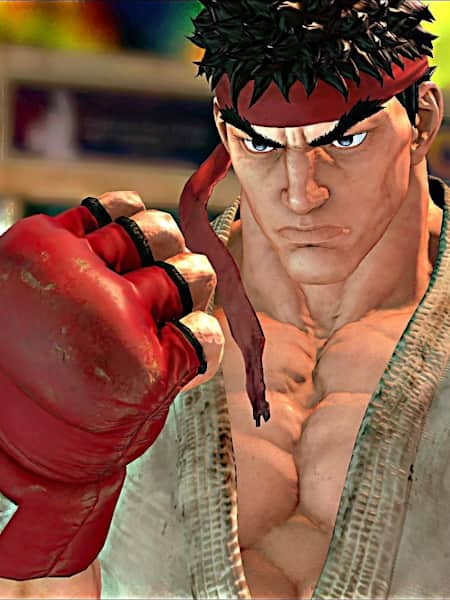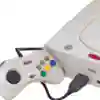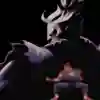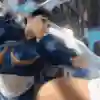Gaming
When a video game franchise passes the grand old age of 30 it's fair to say it’ll have amassed quite a selection of must-play entries, and Capcom's Street Fighter has more instalments than most – a consequence of the publisher rattling off sequels, spin-offs and numerous minor iterations during the glory years of the '90s.
While this constant conveyor belt of games may have annoyed the long-suffering parents who had to foot the bill each and every time a new version of Street Fighter II hit store shelves, it gave us the fascinating evolution of an entire genre.
With this in in mind we've picked out 10 of the most notable Street Fighter games and spin-offs ever released.
Hyper Street Fighter II: The Anniversary Edition
Street Fighter II: The World Warrior may have been the game which kick-started a one-on-one fighting craze and restored faith in the ailing coin-op industry, but we've not included it in this list. Why? Because thanks to Capcom's insistence on releasing a new update almost every year, a much better version exists in the form of Hyper Street Fighter II: The Anniversary Edition, a 2003 PlayStation 2 title which uses Super Street Fighter II Turbo as its base but allows you to play multiple versions of each character taken from all five previous iterations of the game. Although it was initially a home console exclusive, Capcom retroactively ported it to arcade arena, making it the sixth and final coin-op version of Street Fighter II – and perhaps the definitive version for any self-respecting fan.
Street Fighter Alpha 3
As if to prove that you can never have too many Street Fighter sub-series, Capcom launched Street Fighter Alpha (Zero in Japan) in the mid-'90s, which effectively acted as a prequel story to the original 1987 game. The returning members of the cast – such as Ryu, Ken and Chun-Li – are all noticeably younger-looking, and the game sports an eye-catching, anime-like visual style which makes it stand apart from the semi-realistic shading seen in Street Fighter II. Street Fighter Alpha 3 is undeniably the zenith of this particular series, as it adds in loads of fan-favourite characters (including the entire cast of Street Fighter II, which makes the prequel timeline even more confusing) and refines mechanics such as super specials, counters and combos. Superb ports exists on the Sega Dreamcast and Saturn, with the latter being exclusive to Japan.
Street Fighter: The Movie
Forgive us, but we've included this rather dismal adaptation of the 1995 Hollywood movie purely because we feel you should play it to see how bad a Street Fighter game can be. Not to be confused with the arcade game of the same name (which is only slightly less laughable), Street Fighter: The Movie was released on the Sony PlayStation and Sega Saturn in 1995 and features digitized actors from the film itself – a trick stolen from Mortal Kombat. While the core mechanics are based on Street Fighter II Turbo – right down to the inclusion of super-special moves – something has gone badly wrong in the execution. Slowdown rears its ugly head throughout, which throws off the instinctive timing that is so integral to the experience. The visuals look terrible by modern standards – they did in 1995, to be honest – and the full-motion video sequences which bookend the action only serve as a reminder of how bad the Jean-Claude Van Damme film was. A fascinating moment in gaming history, and a reminder of how great true Street Fighter games are by comparison.
Street Fighter III: 3rd Strike
After the incredible success of Street Fighter II it was almost inevitable that we'd get a third "proper" sequel, but Capcom made fans wait for quite some time before offering up Street Fighter III. True to form, the company released different iterations of the same core game with new features and additional characters separating them; 1999's 3rd Strike is the final version of the game and is generally regarded as the best. Street Fighter III's selling point is its stunningly smooth animation and deep mechanics, which offer a more tactical experience based around timing and counters. For many followers of the franchise, this instalment represents Street Fighter at its peak.
Street Fighter EX Plus Alpha
While Capcom did a commendable job of keeping the Street Fighter series firmly rooted in the world of 2D, it did experiment with a 3D approach during the 32-bit PlayStation era. Street Fighter EX Plus Alpha may have a silly name – and, in all honesty, it's not really a full-3D fighter, but a 3D fighter locked to two planes of movement – but it retains everything that makes the franchise so appealing. The boxy polygon fighters may lack the expressive character of their 2D counterparts, but the animation is excellent and the lighting effects are surprisingly effective. Compared to the often sluggish Tekken and Soul Edge, this spin-off felt refreshingly different at the time, and arguably laid the foundations for titles like Street Fighter IV and V.
Capcom Vs. SNK 2
Back in the 90s, Capcom and SNK were bitter rivals. Both fought for supremacy of the one-on-one fighting genre following the launch of Street Fighter II, with SNK following up with titles like Samurai Shodown, Fatal Fury, Art of Fighting and King of Fighters – the latter of which briefly became more popular than Capcom's own efforts in Japanese arcades. No one ever believed that the two firms would collaborate, but that's exactly what happened in 2000 with the release of Capcom Vs. SNK. While this seismic release was well-received, its 2001 sequel was even better, mixing 2D sprites with stunning 3D backgrounds.
Ultra Street Fighter IV
Capcom effectively turned their backs on the Street Fighter series for the best part of the 2000s, choosing instead to leverage their other properties. However, by 2008 the time was right for a revival, and that's exactly what Street Fighter IV provided; while it retained the two planes of movement, everything on screen was rendered in glorious 3D. The cast of the original Street Fighter II returned along with some new faces and other series favourites, and 2010's Super Street Fighter IV continued Capcom's tradition of iterative releases. Despite being almost a decade old, this remains one of the best instalments in the entire lineage.
Street Fighter V
Street Fighter V didn't have the smoothest of launches, with Capcom holding back certain modes and features until months after release. However, the title's deep mechanics, enjoyable gameplay and competitive online community have ensured that it has found favour with the Street Fighter faithful, and continues to grow and develop as time goes on; unusually, Capcom are insisting that there will be no further iterations of the game, with DLC being deployed to enhance the experience with every passing month instead.
Marvel Vs. Capcom 2: New Age of Heroes
When Capcom decided to mash up the world of Street Fighter with Marvel's X-Men in 1996 it created a new sub-genre which focused on a taller playing field and the ability to tag-in other fighters during battle. The recent Marvel Vs. Capcom: Infinite is the culmination of this concept, but for many fans it is the second Marvel Vs. Capcom title – which hit arcades in 2000 and was later ported to the Sega Dreamcast – which remains the pinnacle of the franchise. Now offering three-on-three tag battles with a whopping 56 selectable characters from the worlds of Marvel and Capcom, it has gone down as one of the most enjoyable fighting games of all time, and was later ported to PlayStation 3 and Xbox 360 as a downloadable title.
Ultra Street Fighter II: The Final Challengers
The most recent entry in the Street Fighter bloodline is perhaps one of the most controversial; on the surface, Ultra Street Fighter II is little more than a repackaged version of Super Street Fighter II HD Remix, a downloadable title from 2008. While this is true – and the exclusive "Way of the Hado" mode with its motion controlled action is an insult to all things Street Fighter – the Nintendo Switch is perhaps the ideal platform for this kind of game. The detachable controllers mean that you can take the fight with you anywhere, and hold an impromptu contest as long as you can find a willing rival. The game has sold well on Nintendo's console, which suggests that despite being a rather lazy release, the gaming world still has plenty of love for this classic franchise.






